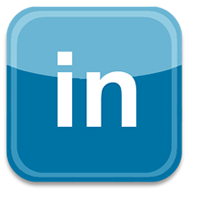The Green Sheet Online Edition
December 12, 2017 • 17:12:02
Insights from the 2017 Jack Henry Annual Conference

For the last seven years, I've reported on the annual ProfitStars Educational Conference. Jack Henry & Associates Inc. is the parent company for ProfitStars, which handles payments. Previously, the companies held separate conferences; this year, they were combined as the 2017 Jack Henry Annual Conference. This resulted in a comprehensive, four-day presentation on current issues in commercial banking and payments for 1,800 attendees at the Gaylord Nashville convention facility. Jack Henry is an S&P 400 company with fiscal 2016 operating revenue of $1.355 billion. In the KPMG 2016 Fintech 100 listing, it is ranked as the 14th largest provider of IT financial services worldwide. It supports over 11,000 financial institutions by providing either core processing or a suite of products and services. Clients range from small community banks to the largest banks owned by financial holding companies.
A core service provider offers a back-end system that can process daily banking transactions and post updates to accounts and other financial records. Core systems usually include deposits, savings accounts, investments, loans, credit-processing capabilities and more. Since these are usually in silos, they provide reporting tools and interfaces to the general ledger. Changing your core processor is daunting and takes at least a couple of years. It is not undertaken lightly. Jack Henry has a mere handful of competitors, and it would be difficult to start a business as complex as this from scratch today.
The Federal Deposit Insurance Corp. reported that as of March 16, 2017, there were 6,122 U.S. banks. About 90 percent are classified as community banks, which typically hold less than $1 billion in assets (for a bank, an asset is a loan).
Advantages of working with community banks
If you are selling merchant services in your community, get to know the community banks that your merchants and prospects use. A deposit in a small bank will create a local loan, but in a megabank, it will fund loans countrywide, as well as buy foreign currencies or bonds, corporate stock or bonds, and other securities. Large banks are involved in trading securities, investment banking, insurance sales, and credit card issuing and acquiring. A big bank makes non-interest income from trading securities, fee based services, overdraft fees, etc. A local bank makes most of its income from local loans made to local merchants that you want as your clients. In the credit card world, bank issuers and bank acquirers used to be differentiated. A bank was one or the other; some nonbanks were large acquirers. Today, fewer than 10 banks are the major issuers and acquirers, and most of them are both. Examples include Citigroup, Bank of America, Wells Fargo, JPMorgan Chase, Capital One and U.S. Bank. These banks will typically sponsor large processors and ISOs, which might have sub-ISOs and payfacs under them.
If you are a merchant level salesperson or small ISO, it is unlikely you will have a senior level contact at one of the big banks, but if you work with your local community bank, you will soon get to know the loan officers and even the CEO, who will at some point refer clients to you for help that you can provide but the bank cannot because it does not have an in-house treasury services or merchant services department. These local banks are likely to be Jack Henry clients. Reach out to your local banks for joint marketing campaigns.
Ways in which banks are adapting
You have heard nonsense in the press about the state of banking today. Bill Gates said, "Banking is necessary; banks are not" and "Banks are dinosaurs." But, as others have said, if cars performed like Microsoft software, your car would crash twice a day for no reason, and every time you got a new car you would have to learn to drive all over again because it would operate differently than the old one. So Gates is not a credible witness on this subject.
Here is a more nuanced comment going around: Banking as we know it is over. Technology change (smartphones, big data and the cloud) allows anyone to create a fintech startup, distribute services directly to consumers, or create a platform for consumers to provide those services to each other and offer a richer customer experience.
Yes, things are changing in and around banking. Yes, banks have a customer base that trusts them, brand recognition, and regulatory and compliance expertise. But the fintechs can add another dimension: disruptive technologies and agility. There are growing customer expectations for omnichannel shopping. There is movement toward open banking, digitization, interoperability and the digital economy. Financial services in the future will be open-sourced and real-time. Given this, bankers are thinking about things such as:
- Optimizing the customer experience – the prime competitive differentiator
- Providing a unified mobile payments experience
- Changing the bank's operating culture to foster innovation and break out of legacy systems and silos
- Hooking up with fintechs to provide richer products so that everyone can be a merchant and every device can accept payments
- Preparing for the next wave of fintech: software as a strategy. It's one thing to be a fintech with a dozen employees and a dream, but it is another thing to be a bank with hundreds of employees and thousands of clients. Any proposed solution must go beyond simple integration and training, sales support and a marketing plan.
Why this matters
There are a few reasons why this is important to you. First, ProfitStars, www.profitstars.com, has a rich suite of treasury services and products that your clients need, and it is looking for ISOs to sell their product suite. You can sell their products to your merchants regardless of where they are located and regardless of whether the merchant is using a bank running on the Jack Henry core platform.
Second, your merchants will look to you as their trusted resource for information on payments, because they will not get this information from their bank, unless they are a large enterprise, for example, one that has over $100 million in sales. Community banks do not have the sales staff to leave the branch and make sales calls.
Third, by cultivating a relationship with a local community bank, you will gain a valuable source of new merchant clients. Payments generate as much as 40 percent of non-interest income for a bank, but community banks will need well-staffed, well-trained, up-to-date ISO partners to talk to their merchants.
Banks are building a new payments rail that encompasses faster payments and payments from mobile devices. It has been 40 years since the last new rail, the ATM, and look how long it took for national ATM coverage.
To do this, banks need to find trusted partners, nontraditional third parties, to mitigate the rise of disintermediation, protect customer relations and revenue streams, gain operational efficiencies and cost avoidance, and harness valuable customer data.
In the second quarter of 2018, Jack Henry will do a proof of concept with The Clearing House and an alpha test with Zelle for a faster payments platform. TCH will build a new rail for real time clearing and settlement, and the charge will be uniform across the network for a truly level playing field.
Jack Henry has a hosted remittance product that targets new and existing lockbox users. It includes multiple scan capabilities, accounting validation update, and third-party interface files.
There is also an e-lockbox product for check-free payments, as well as a remote deposit product that will deposit checks and post to QuickBooks. For large commercial depositors, it can receive bulk mail, do the sorting and preparation, manually key to an accounts receivable system, balance and prepare the deposit via remote deposit capture, and image deposits for an archive. This allows the business to get rid of processing Metavante and Fiserv checks.
Community banks have not focused on selling treasury products. The loan team, operations team and treasury operations are siloed. But the bank can sell electronic banking as a catalyst to open the door to talk about treasury products and to identify and generate loan referrals. They can use data mining to identify large depositors and high transaction activity. The issue is that banks do not know how to sell. Bankers are heard to say, "This would be a great job if it wasn't for the customers!" This is where ISOs come in, because ISOs know how to sell. 
Brandes Elitch, Director of Partner Acquisition for CrossCheck Inc., has been a cash management practitioner for several Fortune 500 companies, sold cash management services for major banks and served as a consultant to bankcard acquirers. A Certified Cash Manager and Accredited ACH Professional, Brandes has a Master's in Business Administration from New York University and a Juris Doctor from Santa Clara University. He can be reached at brandese@cross-check.com.
Notice to readers: These are archived articles. Contact information, links and other details may be out of date. We regret any inconvenience.





